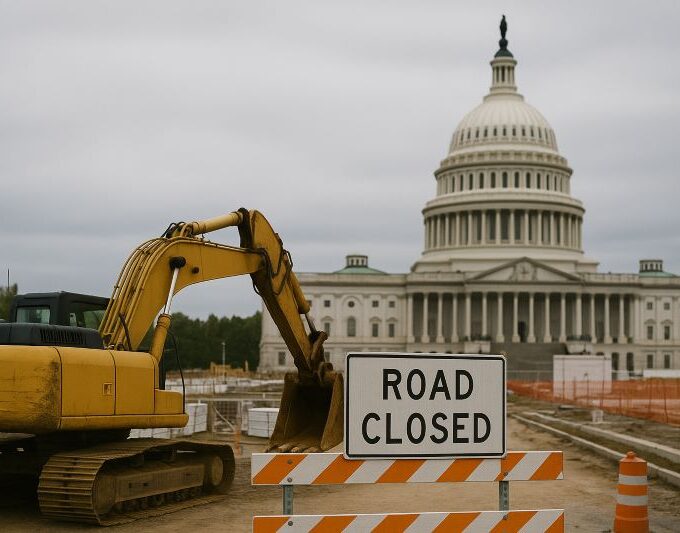On August 10, Indian Prime Minister Modi stated that India is steadily moving toward becoming “one of the world’s three largest economies.” This was seen as a response to U.S. President Trump’s description of India’s economy as “lifeless.” On August 6, Trump announced plans to raise U.S. tariffs on India to 50% to punish the country for “directly or indirectly purchasing Russian oil.” This makes India the U.S.’s most heavily tariffed trading partner in Asia. In recent days, international opinion has been actively assessing the impact of U.S. tariffs on India, with the manufacturing sector bearing the brunt.
From Jewelry to Steel
Walter Ladwig, Senior Lecturer in International Relations at King’s College London, told Asia Weekly that India’s labor-intensive industries—such as jewelry, textiles, and chemicals—will be disproportionately affected. “The jewelry sector alone exports around US$9 billion a year,” he explained. “A 50% tariff could force many of these products out of the U.S. market.” He added that the loss of export-oriented manufacturing jobs—particularly among artisans—could rise sharply. Given that previous tariff hikes have already cost tens of thousands of jobs, the impact this time will be especially significant.
According to a report by the British Broadcasting Corporation (BBC), the tariffs could severely hit India’s exports and economic growth. If such tariff rates persist, nearly all of India’s annual US$86.5 billion worth of exports to the U.S. would become commercially unviable.
Experts say that imposing a 50% tariff on India’s exports to the U.S. could have a massive economic impact, especially in specific sectors such as textiles, garments, auto parts, steel, and gems, placing India at a serious disadvantage compared with competitors like Vietnam, Bangladesh, and China. In addition, the tariffs have already begun to strain the domestic market for India’s electronics contract manufacturers. Last Friday, PG Electroplast sharply cut its profit and revenue targets for the current fiscal year, triggering a sell-off across the sector and dragging down the share prices of companies such as Amber Enterprises.
According to the BBC, in 2024 India’s total exports to the U.S. approached US$87 billion. The U.S. is India’s largest export market, accounting for 18% of its exports and 2.2% of its GDP. A 25% tariff could cause India’s GDP to shrink by 0.2% to 0.4% and could potentially push this year’s economic growth rate below 6%. Most Indian exporters say they can barely withstand a tariff increase of 10%–15%, making a combined tariff of 50% far beyond their capacity.
Moody’s, one of the world’s three major credit rating agencies, stated that Trump’s imposition of a 50% tariff on Indian goods could seriously undermine India’s manufacturing ambitions and slow its economic growth. While it might be possible to negotiate lower existing high tariffs, India’s relatively higher tariffs compared with other Asia-Pacific nations would severely weaken the development of its manufacturing sector and could even reverse the gains made in attracting investment in recent years.
The Story Behind the Defense Minister’s Canceled U.S. Visit
According to the Hindustan Times, in his speech on the 10th, Modi said, “We are moving rapidly toward the goal of becoming the world’s third-largest economy. This pace comes from the spirit of reform, performance, and transformation, and from clear intentions and sincere efforts.”
After the Trump administration unveiled its so-called “reciprocal tariff” measures in early April, it initially suggested that a trade deal with India might be reached soon. However, differences over tariffs and non-tariff barriers have stalled the negotiations. India’s recent imports of Russian oil have become a key target of U.S. criticism.
In response, India has insisted that its imports are driven by market factors and are crucial to its energy security. Former Indian Vice President Naidu said, “We must decide from which country to import based on our national interest.” A day earlier, he had stated that India would not “succumb to threats” over the issue of buying Russian oil.
U.S. Treasury Secretary Besant said that India began trade talks with the U.S. quite some time ago but has been delaying progress, and that Washington is disappointed with India’s approach. Trump also announced a 21-day grace period to allow both sides to negotiate on trade and tariffs.
On the 8th, India responded by canceling Defense Minister Rajnath Singh’s planned visit to the U.S., putting on hold discussions about purchasing American military equipment. On the 10th local time, Singh publicly stated that “some people don’t like India’s rapid development and are trying to make Indian-made products more expensive.” According to The Indian Express, Singh’s comments were aimed at Trump.
“Punitive Tariffs Push India into a Corner”
Although the U.S. tariff hike is aimed at curbing India’s purchases of Russian oil, analysts say New Delhi may find it difficult to comply in practice. Russian oil still accounts for about 45% of India’s total imports, and according to The New York Times, if India stopped buying Russian oil, consumers and domestic manufacturers would face higher prices—an outcome that would deal a political blow to the Modi government.
Moreover, rerouting tens of billions of dollars’ worth of global oil shipments would be no easy task. Some veteran figures in the refining industry note that refiners would have to modify existing facilities to process Middle Eastern crude again, a change that would be both costly and complex.
“Punitive tariffs are pushing India into a corner,” Reuters reported, adding that distancing itself from Russia would seriously damage India’s efforts to maintain a multipolar foreign policy. Yet a 50% tariff is extremely hard to bear, while taking retaliatory measures could be even more costly. India supplies about 65% of the generic drugs used in the U.S., and U.S. companies rely heavily on Indian IT services—but these industries are relatively easy to replicate elsewhere.
While India’s large domestic market makes it less vulnerable to tariffs than countries in Southeast Asia, experts believe that “the ongoing uncertainty triggered by the U.S.” will affect India’s ability to attract both domestic and foreign investment. Observers will be watching closely to see how India responds to this diplomatic test and whether it will take retaliatory action.
Ajay Srivastava, of the Indian think tank Global Trade Research Initiative, said that the U.S. move could “prompt India to reassess its strategic positioning and deepen cooperation with Russia, China, and many other countries.” Multiple media outlets have noted that, after the U.S. announced further tariff hikes on India, Modi revealed plans for his first visit to China in seven years and also held a phone conversation with Brazilian President Lula.













Leave a comment